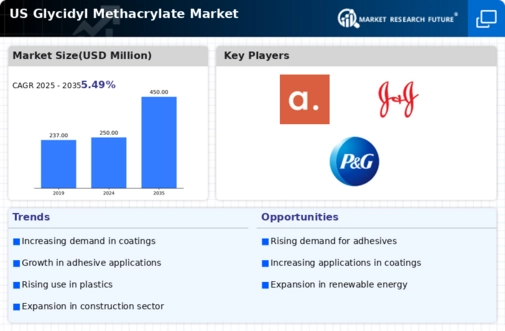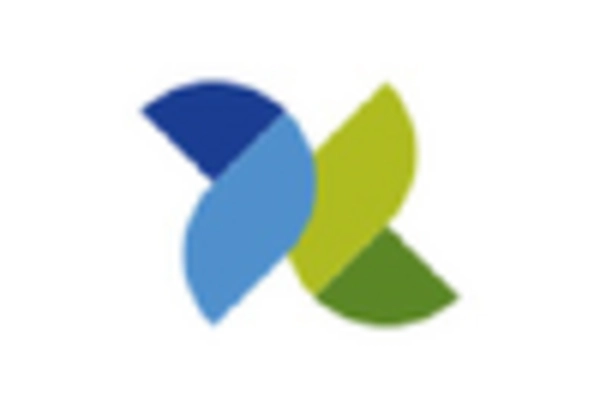Rising Automotive Production
The automotive industry in the US is experiencing a resurgence, which serves as a crucial driver for the glycidyl methacrylate market. With the increasing production of vehicles, there is a heightened need for advanced materials that offer superior performance and durability. Glycidyl methacrylate is favored for its properties that enhance the performance of automotive coatings and adhesives. Recent statistics indicate that the US automotive production is expected to reach approximately 12 million units annually, which could lead to a substantial increase in the demand for glycidyl methacrylate. This trend suggests that as automotive manufacturers seek to improve vehicle longevity and aesthetics, the glycidyl methacrylate market will likely benefit significantly.
Growth in Construction Sector
The expansion of the construction sector in the US is a pivotal driver for the glycidyl methacrylate market. As infrastructure projects and residential developments increase, the demand for high-performance coatings and adhesives rises correspondingly. Glycidyl methacrylate, known for its excellent adhesion and durability, is increasingly utilized in construction applications. According to recent data, the construction industry is projected to grow at a CAGR of approximately 5% over the next few years, which could significantly boost the consumption of glycidyl methacrylate. This growth is likely to be fueled by government investments in infrastructure and a surge in housing projects, thereby enhancing the overall market dynamics for glycidyl methacrylate in the US.
Advancements in Electronics Manufacturing
The electronics manufacturing sector is evolving rapidly, and this evolution is a notable driver for the glycidyl methacrylate market. As electronic devices become more sophisticated, the demand for high-quality adhesives and coatings that can withstand extreme conditions is increasing. Glycidyl methacrylate is recognized for its excellent thermal stability and adhesion properties, making it suitable for various electronic applications. The US electronics market is projected to grow at a CAGR of around 4% in the coming years, which may lead to an increased uptake of glycidyl methacrylate in the production of electronic components. This growth indicates a promising outlook for the glycidyl methacrylate market as it aligns with the needs of the electronics industry.
Increased Focus on Research and Development
The emphasis on research and development within the chemical industry is a significant driver for the glycidyl methacrylate market. Companies are investing in innovative formulations and applications to enhance the performance of glycidyl methacrylate in various sectors. This focus on R&D is likely to lead to the development of new products that cater to specific market needs, thereby expanding the application scope of glycidyl methacrylate. As firms strive to create more efficient and sustainable solutions, the glycidyl methacrylate market may witness a surge in demand driven by these advancements. The potential for new applications in diverse industries could further solidify the market's position in the US.
Regulatory Support for Chemical Innovations
Regulatory frameworks in the US are increasingly supportive of innovations in the chemical sector, which serves as a vital driver for the glycidyl methacrylate market. Policies aimed at promoting the use of advanced materials and sustainable practices encourage manufacturers to adopt glycidyl methacrylate in their products. The US government has been implementing regulations that favor the development of eco-friendly chemicals, which aligns with the properties of glycidyl methacrylate. This regulatory support may lead to increased investments in the production and application of glycidyl methacrylate, thereby enhancing its market presence. As companies adapt to these regulations, the glycidyl methacrylate market is likely to experience growth opportunities.

















Leave a Comment